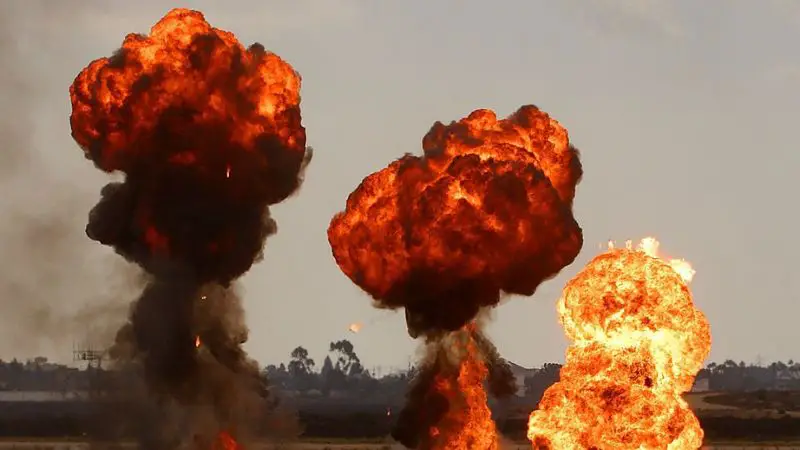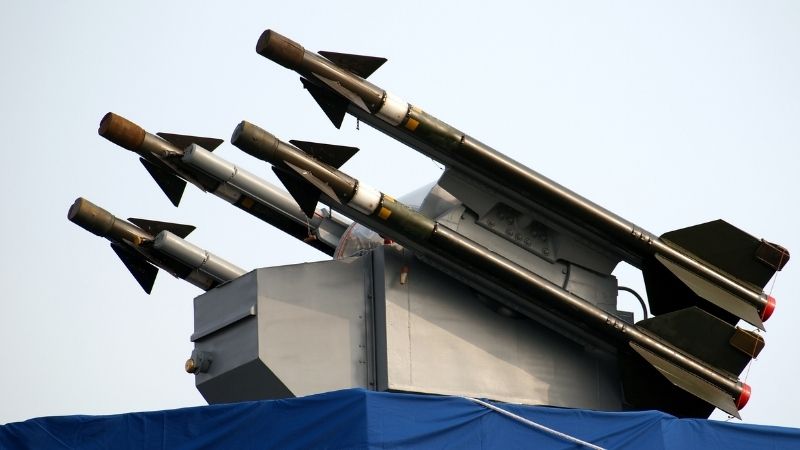Missile vs Bomb: What’s the Difference? (With table)
Do you know the difference between a missile and a bomb? Many people don’t realize that there is a difference, but there is! In this blog post, we will discuss the differences between missiles and bombs.
A missile is a weapon that is propelled through the air and guided to its target, while a bomb is simply a container of explosives. Missiles are generally more accurate than bombs, as they can be directed to their targets with greater precision.
That’s it for the short answer, keep reading to get a more in-depth understanding!
Main Difference Between Missiles and Bombs
As a whole, missiles are faster, more accurate, and carry a much heavier payload than bombs.

Bombs are unguided munitions that rely on the pilot or aircraft to hit the target. They have been used in warfare for centuries and continue to be one of the most common types of ordnance used today.
Missiles, on the other hand, are guided weapons that use some form of guidance system to direct them to their targets. The first missiles were developed in World War II and saw widespread use during the Cold War. Today, missiles are an essential part of any military’s arsenal.
Here is a comparison table of the two weapons:
| Bomb | Missile | |
|---|---|---|
| Definition | Explosive device falling towards a target (explode on impact in general) | Guided weapon, propelled towards a target. |
| Guidance system | None | Radar, infrared, GPS. |
| Speed | It depends on the altitude and weight of the bomb. | Faster than bombs, can achieve Mach 20. |
| Accuracy | Poor. | Can hit specific targets. |
| Range | A few kilometers. | Up to several thousands kilometers. |
| Cost | Cheap to produce. | Way more expensive. |
Bombs
Definition
A bomb is an explosive device that is detonated by a variety of means, including impact, heat, friction, or remotely.
Bombs come in a variety of shapes and sizes and can be designed to target specific kinds of targets. The most common type of bomb is the aerial bomb, which is dropped from an aircraft.
History
Bombs have been used in warfare for centuries, with the first recorded use dating back to the 11th century.
During World War II, bombs were the primary means of attacking enemy targets. Today, they are still widely used, although missiles have largely replaced them as the weapon of choice for many militaries.
Types of bombs
There are many different types of bombs, but the most common are:
- Aerial bombs: these are dropped from aircraft and can be either guided or unguided.
- Improvised explosive devices (IEDs): these are homemade bombs that have been used in terrorist attacks and insurgency warfare.
- Nuclear bombs: these are the most destructive bombs and use nuclear fission or fusion to create an explosion.
- Thermobaric bombs: these are highly explosive bombs that create a large fireball.
Missiles

Definition
A missile is a guided weapon that is propelled through the air towards a target. Missiles use a variety of guidance systems, including radar, infrared, and GPS, to direct them to their targets.
Missiles come in a variety of shapes and sizes and can be armed with a variety of payloads, including nuclear warheads.
Related: What is the Difference Between a Missile and a Rocket?
History
The first missiles were developed during World War II, but they saw limited use during the conflict. It was not until the Cold War that missiles became a key part of military strategy.
Today, missiles are an essential part of any military’s arsenal and are used for a variety of purposes, including air-to-air combat, ground-to-air defense, and precision strikes.
For example, the U.S. military’s Tomahawk missile is a long-range, precision-strike weapon that can be launched from land, sea, or air. It has been used in a variety of conflicts, including the Gulf War and the Iraq War.
Types of missiles
There are many different types of missiles, but the most common are:
- Air-to-air missiles: these are used by fighter jets to shoot down other aircraft.
- Air-to-ground missiles: these are used by aircraft to attack ground targets.
- Ground-to-air missiles: these are used by ground forces to defend against enemy aircraft.
- Ground-to-ground missiles: these are used by ground forces to attack enemy targets.
As you can see, there are some key differences between bombs and missiles. Missiles are generally more accurate and have a longer range than bombs, but they are also more expensive to produce. Ultimately, the decision of which weapon to use depends on the specific situation and target.






